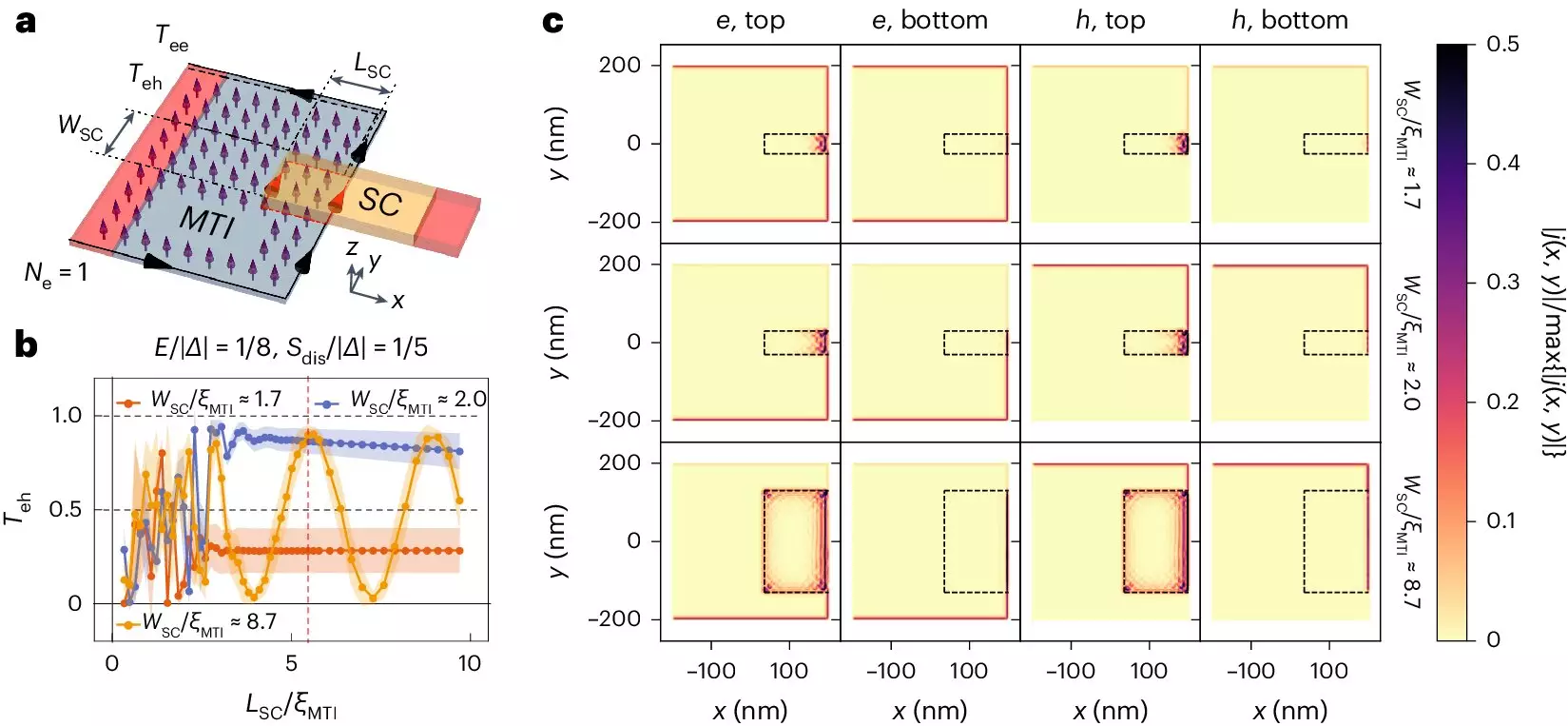The groundbreaking research conducted by a team of experimental physicists from the University of Cologne has revealed the possibility of inducing superconducting effects in materials with unique edge-only electrical properties. This significant discovery not only sheds light on advanced quantum states but also opens up new avenues for the development of stable and efficient quantum computers.
Superconductivity is a fascinating phenomenon where electricity can flow without any resistance in certain materials. In contrast, the quantum anomalous Hall effect also results in zero resistance but is confined to the edges of the material. The combination of superconductivity and the quantum anomalous Hall effect is predicted to give rise to Majorana fermions, topologically protected particles that could revolutionize future technologies, particularly quantum computers.
The study, titled “Induced superconducting correlations in a quantum anomalous Hall insulator,” published in Nature Physics, outlines the team’s efforts to induce superconductivity in the edge of a quantum anomalous Hall insulator. The researchers successfully created chiral Majorana edge states, a special type of Majorana fermions, which are essential for realizing topologically protected “flying qubits” in quantum computers.
Anjana Uday, the first author of the paper and a final-year doctoral researcher in Professor Dr. Yoichi Ando’s group, shared insights into the research process. The team utilized thin films of the quantum anomalous Hall insulator combined with a superconducting Niobium electrode to induce chiral Majorana states at the material’s edges. After years of dedicated work, they observed crossed Andreev reflection, a phenomenon that allowed them to detect the induced superconductivity in the topological edge state.
A Breakthrough in Experimental Physics
Gertjan Lippertz, a co-first author of the paper and a postdoctoral fellow in the Ando group, emphasized the significance of the experiment. Despite numerous attempts by other research groups over the past decade, only the Cologne team succeeded in achieving induced superconductivity in quantum anomalous Hall insulators. The synergy of film deposition, device fabrication, and ultra-low-temperature measurements within the same lab was identified as a key factor in their success.
The researchers at the University of Cologne collaborated with peers from KU Leuven, the University of Basel, and Forschungszentrum Jülich to bring this breakthrough to light. The joint Cluster of Excellence Matter and Light for Quantum Computing (ML4Q) provided essential resources and support for the research. Moving forward, the team aims to confirm the emergence of chiral Majorana fermions and explore their unique properties, with the ultimate goal of revolutionizing quantum computing.
The discovery of induced superconductivity in quantum anomalous Hall insulators offers a promising path towards stable qubits that are less susceptible to decoherence and information loss. Harnessing topological superconductivity and chiral Majorana edge states could potentially lead to the development of more robust and scalable quantum computers. This research paves the way for a new era in quantum computing technology.


Leave a Reply